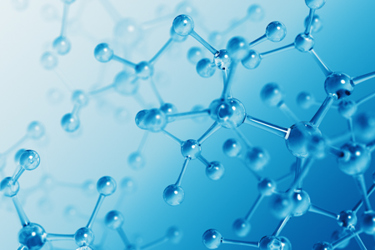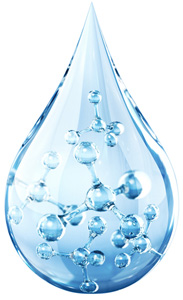Destroying PFAS In Wastewater To Help Safeguard Waterways
By Dr. Zekun Liu

Technologies for the destruction of per- and polyfluoroalkyl substances (PFAS) hold promise, but also face challenges.
There is growing concern about pollution from perfluoroalkyl and polyfluoroalkyl substances (PFAS), especially with a recent report that nearly half of all U.S. drinking water is contaminated.1 U.S. industries are a primary source, having disposed of at least 60 million pounds of PFAS waste in the past five years.2 Destroying PFAS at their sources is a critical first step to addressing this major environmental and health hazard. Addressing industrial wastewater is a solid first step.
PFAS are widely used synthetic chemicals with a powerful carbon-fluorine (C-F) bond that makes them highly resistant to heat, water, oil, and corrosion, leading to high environmental persistence. These properties also make them highly resistant to traditional water treatment strategies.
Common technologies used to treat wastewater, including granulated activated carbon (GAC) and membrane separation technologies such as reverse osmosis and nanofiltration, have at least three major shortcomings when addressing PFAS. First, though effective at removing long-chain legacy PFAS, these technologies have difficulty removing short- and ultrashort-chain PFAS. Second, certain emerging PFAS precursors (fluorinated compounds that break down into regulated PFAS compounds) can more easily pass through these separation barriers than the legacy PFAS, posing great challenges and unintended PFAS exposure in subsequent treatment. Lastly, these separation technologies do not destroy PFAS.
In fact, the way wastewater is currently treated can sometimes exacerbate the problem. For example, concentrations of PFAS have been found to be higher after treatment3 in wastewater treatment plants, because PFAS precursors are converted into regulated compounds through oxidation.
One of the biggest challenges in destruction is ensuring that all PFAS, especially the overlooked short- and ultrashort-chain compounds, are treated. This is especially critical because a recent environmental analysis showed that more than 95% of all PFAS in the environment are shorter-chain PFAS compounds.4 Short-chain PFAS are also in high demand in advanced manufacturing such as computer chips. In addition, new regulations are expected to focus on shorter-chain PFAS. All of this means that destruction methods that result in shorter-chain PFAS might not be relevant in the long run.
Five New PFAS-Destruction Technologies
Exciting new technologies have been developed to destroy PFAS. Five especially promising technologies are hydrothermal alkaline treatment (HALT), supercritical water oxidation, electrochemical destruction, plasma-based water treatment, and photochemical defluorination.
- HALT destroys PFAS through thermal-, hydrolysis-, and hydroxide-driven reaction mechanisms that require high temperatures (350°C), high pressure (<22MPa), and highly alkaline hydrothermal conditions (pH>14). These operating conditions are below the critical point of water. Sodium hydroxide (NaOH) is used to assist in the defluorination of PFAS and to avoid operating at supercritical conditions. High energy costs and component corrosion due to the harsh alkaline conditions are some of the potential drawbacks with this method.
- Supercritical water oxidation also uses high temperatures (374°C) and high pressure (22.1MPa) to induce a supercritical state that increases organic solubility and accelerates oxidation without the need for a reagent. This method requires fuel to maintain a sustained reaction, which drives up energy costs. The high pressure conditions raise concerns about safety and maintenance costs.
- Electrochemical destruction uses electrical currents for oxidation. It operates with ambient conditions and has low energy costs. These advantages are offset by some potentially major disadvantages, including potential generation of toxic byproducts and insufficient destruction of short-chain PFAS because of the limitation of mass transfer.
- Plasma-based water treatment uses high-energy electrical discharges to create ionized gas called plasma. The plasma converts contaminants in water into their constituent parts. Similar to electrochemical destruction, plasma-based water treatment suffers from insufficient destruction of short-chain PFAS compounds. Safety is also an issue because of the high voltages needed to generate plasma.
- Photochemical defluorination uses a combination of UV light and photosensitizer to break the C-F bonds of PFAS and convert them to naturally occurring, nontoxic elements. The unique advantage of this method is that it equally addresses long-, short-, and ultrashort-chain PFAS compounds. This method operates at room temperature and atmospheric pressure, keeping maintenance and operational costs to a minimum. UV technology is already widely used in modern water treatment plants, so there is already a robust infrastructure and a well-developed supply chain, enabling easy integration into current processes.

The PFAS pollution problem is a global threat that can only be addressed by a two-pronged approach: prevention and remediation. Thankfully, there are efforts being made to ban future use of PFAS. However, PFAS are so ubiquitous and persistent that eliminating all of the PFAS already in the environment will take years, so it is important to scale up effective defluorination technologies as quickly as possible.
There is no one-size-fits-all approach to PFAS destruction that will work. Various technologies will be needed for differing applications. The keys are to invest in promising technologies, to require comprehensive and transparent testing to ensure the technologies perform as promised, and to ensure that the solutions are sustainable.
References:
- https://www.usgs.gov/news/national-news-release/tap-water-study-detects-pfas-forever-chemicals-across-us
- https://www.theguardian.com/environment/2023/nov/17/epa-pfas-forever-chemicals-waste-pollution-unregulated
- https://iwaponline.com/wst/article/84/12/3442/85117
- https://pubs.acs.org/doi/pdf/10.1021/acs.est.1c07949
About The Author

Dr. Zekun (Zack) Liu obtained his PhD in chemical and environmental engineering from the University of California, Riverside. His doctoral research specifically focused on UV-based PFAS destruction and membrane separation processes. He serves as an editorial board member for research journals such as Chemosphere and Journal of Water Process Engineering on the topic of PFAS treatment.
